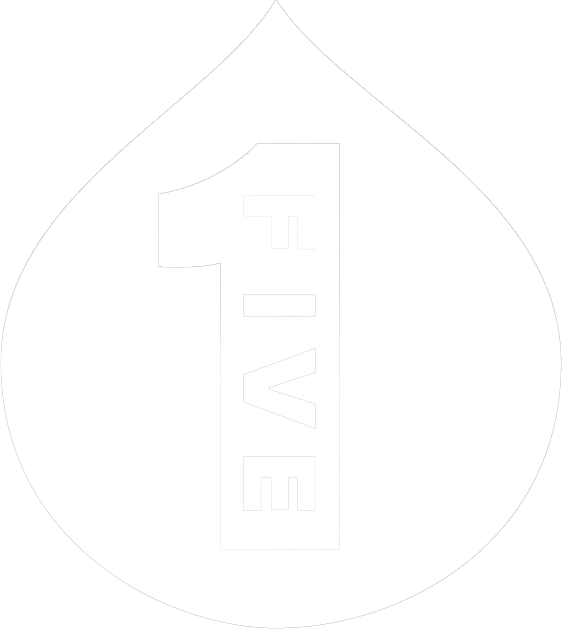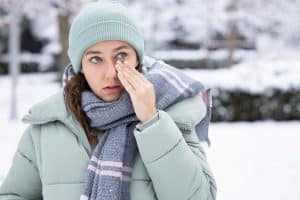Eye strain can be frustrating, especially when you’re trying to get something done and you just can’t concentrate properly due to the discomfort in your eyes. It can even cause headaches and blurred vision, making it even more difficult to get the job done. Fortunately, there are things you can do to keep eye strain at bay.
How to get rid of eye strain
It may seem obvious, but the best way to get rid of eye strain is to step away from whatever is putting your eyes under strain. Since there are so many activities that can cause eye strain, that means there are a lot of things you can try to avoid to see if that relieves the irritation. However, this approach can be time consuming, and might not help you as quickly as you’d like.[1]
To narrow things down for you, we’ve collated our top five favourite ways to tackle eye strain. Remember, not everything works for everyone, but hopefully at least one of these tricks will work for you.
Take a break from screens
Prolonged screen usage is one of the biggest contributors to eye strain, and it can also be one of the trickiest to tackle. After all, many people use computers and tablets as part of their job or studies, so going cold turkey on digital screens isn’t always a viable option. Plus, even if you are able to cut off completely, that doesn’t mean it’s the best decision for your wellbeing. Destressing with a movie, staying in touch with long distance loved ones and using online resources to learn new things are all good for us. It’s important to get a balance between what’s best for your general wellbeing and what’s best for your eye health.[2]
That said, if there are ways in which you can regularly reduce your screen time, it’s a good thing to consider. Where possible, try to focus on which recurring tasks you could do without using screens. Changing these behaviours will have a greater impact on your eye strain than one-off activities you’re not likely to repeat. And if you’re struggling to cut down on screen time, consider using TheraTears® Screen Eyes Eye Drops to relieve eye strain. These drops contain euphrasia to combat red, irritated eyes and are contact lens friendly so you don’t have to interrupt your schedule to use them.
Use eye drops
Continuing on the theme of how eye drops can help with eye strain, you may find that having dry eyes can make eye strain worse. Think of it like dehydration – if you’re already dehydrated, you’re going to be more tired at the end of the day than you would be if you were perfectly healthy. The same is true for your eyes, so having dry eyes can exacerbate the effects of eye strain to the point where it’s keeping you from getting on with your everyday tasks.
If this is the case for you, then it may be time to consider tackling the problem of your dry eyes with eye drops. Everyday-use eye drops can be used at any time when you feel your dry eyes start to flare up, but if you often get dry or strained eyes in the morning before you’ve even used them much, there is another solution that might work better for you. TheraTears® Overnight Eye Drops use hyaluronic acid to restore and rejuvenate your eyes while you sleep, leaving you fresh and ready for the day ahead.[3]
Check your lighting
Another common cause of eye strain is inappropriate lighting – and it might interest you to know that dim lighting isn’t the only issue. Bright lights can also strain your eyes, particularly if the light is in stark contrast to your surroundings. This is partly why it hurts your eyes to scroll through your phone in the dark.
Since both bright and dim lighting can be an issue, there is an element of trial and error when it comes to adjusting your lighting to reduce eye strain, but there are some tricks you can try. When you’re using a digital device with a backlit screen – such as a phone, tablet or computer – try to equalise the brightness of the screen with your surroundings as much as possible. You can also set yourself alarms relating to sunset to help remind yourself to turn a light on so you don’t end up sitting in the dark. And finally, if you can’t change the lighting to suit your task, consider setting whatever you’re doing aside until you can have the right lighting. Your eyes will thank you for it.[4]
Wear your glasses
It’s a simple thing to do. You start a task without your glasses on, get engrossed, and before you know it your head is aching and your eyes are itching. Wearing your glasses – whether they are everyday glasses, reading glasses or even sunglasses – is one of the best ways to avoid eye strain. Your glasses are there to protect your eyes, so don’t forget to use them.
If you often go to do something and realise you’ve no idea where your glasses are, consider getting a glasses chain so that you can wear them all the time without having to have them on your eyes constantly. This goes for sunglasses too – keeping them on a chain or strap can be very useful if you have to keep going in and out of the sunlight.[5]
Look at something far away
Finally, eye strain can sometimes mean you’ve been concentrating on whatever you’re doing for too long without taking a visual break. Lots of tasks like reading, using computers and watching TV involve staring at a single point that doesn’t get nearer or further away from us. This can strain your eyes if you don’t take a break.
The best way to do this is to get outside, as this will give you the greatest variation in visual distance. Try to look at things that are as far away as possible for a few minutes before returning to your task, and you should find your eyes feel much better for it.[2]
Resources:
[1] https://www.aao.org/eye-health/diseases/what-is-eye-strain
[3] https://www.nhs.uk/conditions/dry-eyes/
[4] https://www.rnib.org.uk/your-eyes/eye-conditions-az/light-sensitivity-photophobia/
[5] https://www.nia.nih.gov/health/vision-and-vision-loss/aging-and-your-eyes







